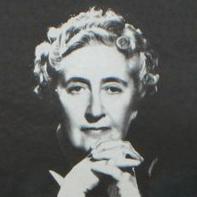The writing style of
Agatha Christie
Agatha Christie
1890-1976
English author known as the 'Queen of Crime' for her 66 detective novels and 14 short story collections featuring Hercule Poirot and Miss Marple, as well as the world's longest-running play, 'The Mousetrap'.
Agatha Christie, the undisputed queen of mystery, has captivated millions with her intricate plots and memorable characters. Yet, it is her distinctive writing style that subtly hooks the reader, weaving complex narratives with clarity and deceptive simplicity. Christie’s prose is accessible and straightforward, eschewing ornate language for functional and direct expressions that drive the story forward and keep readers deeply engaged.
Christie’s narrative technique often involves an omniscient point of view, which allows her to present the thoughts and feelings of multiple characters. This broad perspective is crucial for the mystery genre, as it lets her distribute or withhold information to build suspense and intrigue. Her use of dialogue is particularly effective; conversations between characters are not just vehicles for character development but are also essential in laying out red herrings and clues. This dialogue-driven approach helps maintain a brisk pace and makes her novels compulsively readable.
In terms of sentence structure, Christie favored balance and rhythm. Her sentences are predominantly compound or complex, which helps in layering information and ideas seamlessly. This structure is particularly effective in mystery writing, where the timing of revelations is key to maintaining suspense. Christie’s adept use of this technique allows her to keep readers guessing, leading them through a maze of plot twists and turns without losing them along the way.
Christie’s choice of vocabulary is deliberately restrained. She avoids unnecessary jargon or overly technical terms that might distract from the narrative. This simplicity ensures that the focus remains on the plot and characters, making her books accessible to a wide audience. Her ability to say much with little, to hint rather than show, and to leave space for the reader’s imagination is a hallmark of her style. This subtlety extends to her use of adjectives and adverbs, which are employed sparingly; Christie relies more on strong verbs and precise nouns to create vivid scenes and convey action, keeping the reader’s attention fixed firmly on the unfolding mystery.
